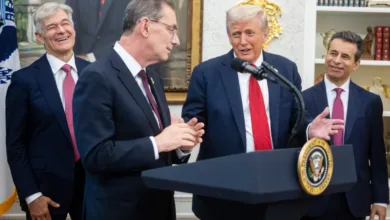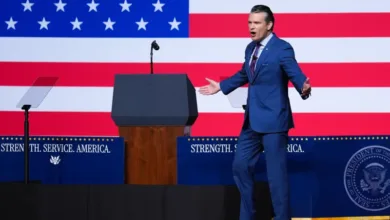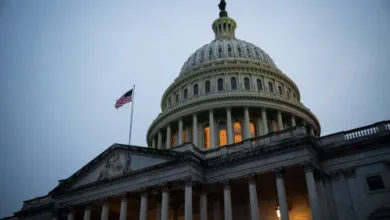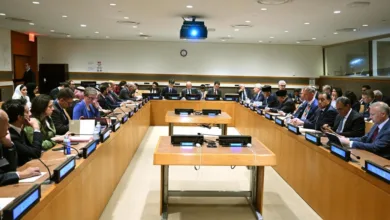The FiveBreaking News
The five! – Episode Summary for Today, Monday , July 28/2025
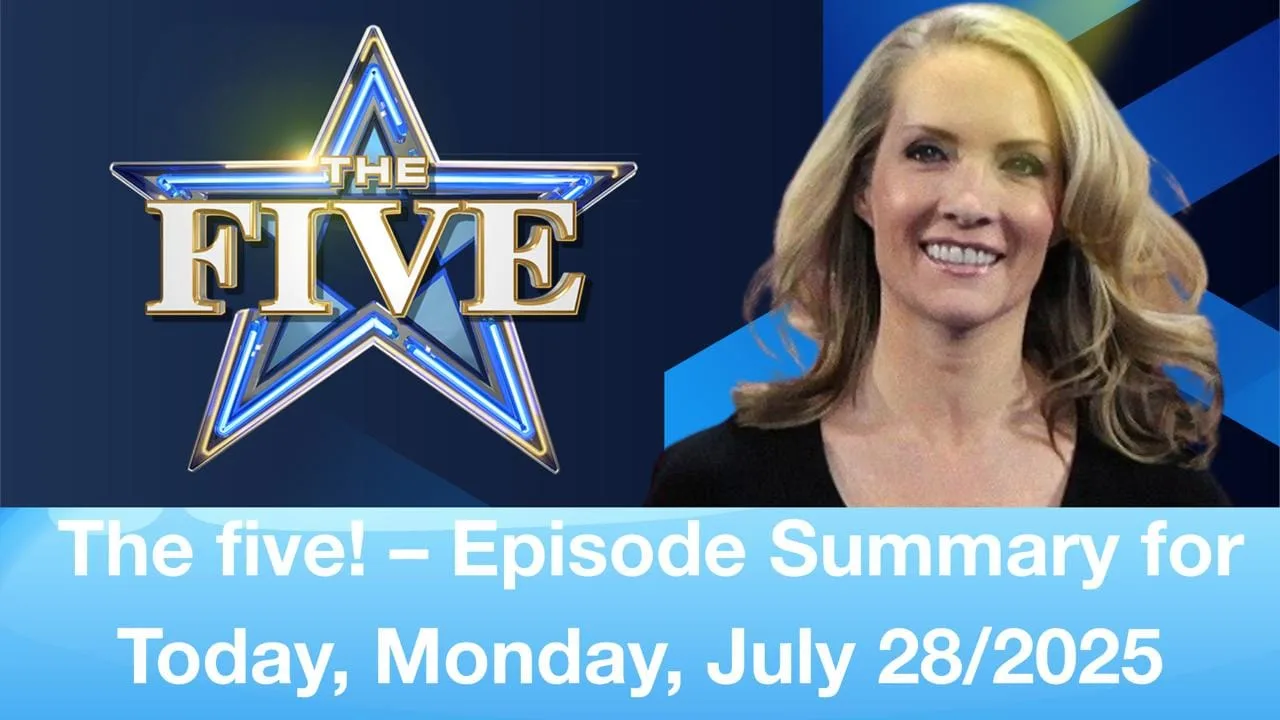
🎙️The Five
1- Opening Segment: Political Disconnect and Youth Outreach Failures
The episode began with the familiar opening line, “It’s five o’clock in New York City, and this is The Five.” The panel immediately tackled what they termed a growing identity and messagincrisis within the Democratic Party. Polling trends presented on-air indicated that younger Americans—especially Gen Z and younger millennials—no longer find the party’s communication resonant or authentic.
Jessica Tarlov acknowledged internal shifts within Democratic messaging but emphasized that regarding tone and substance, the party still appears out of touch. Panelists referenced Vice President Kamala Harris’s remarks at a recent youth summit, interpreting her delivery as scripted and lacking genuine emotional connection. The group debated whether her speech symbolized a broader failure to speak the language of younger voters.
Greg Gutfeld and Jesse Watters criticized what they described as a stale narrative, urging Democrats to move past slogans and into more aspirational storytelling. Dana Perino summed up the issue: without a narrative that feels lived and relatable, younger demographics remain distant—both figuratively and electorally.
2-Economic Reality Check: Rising Grocery Prices vs. Political Blame
From party identity, the conversation shifted to economics—specifically the burden Americans face at the grocery store checkout. The hosts emphasized that real voters aren’t moved by partisan blame games; they’re moved by whether eggs cost $7 at their local supermarket.
Jesse Watters pointedly asked: “Does blaming the last administration change what people pay today?” He argued voters focus on observable relief, not political press releases.
Harold Ford Jr. attempted to contextualize global inflation trends, noting external factors affecting prices nationwide. But Gutfeld pushed back: “Excuses don’t fill your fridge.” The debate revolved around whether Democrats’ backpedaling to past leadership distracted from delivering concrete policy solutions.
Panelists agreed that economic messaging must offer tangible optimism—forward-looking plans to lower household costs—not just retrospection.
3-Cincinnati Street Violence: Crime, Courts, and Public Order
A violent street fight in Cincinnati served as a lens into broader public safety discussions. The panel analyzed how certain judges, described by hosts as overly lenient, may embolden criminal actors when community standards for accountability are not enforced.
Dana Perino brought up local law enforcement comments saying judicial decisions had been overly permissive. Gutfeld, with his characteristic sarcasm, referred to some judges as “social engineers wielding gavels.” The key criticism: rehabilitation rhetoric lacks teeth if it doesn’t come with clear consequences for violent offenses.
Watters emphasized deterrence: “If breaking laws passes without penalty, what stops the next violent act?” The segment painted urban crime as a political line drawn between governance that values order and policies that prioritize progressive ideals—often at perceived civic cost.
4- Sanctuary City Controversy: Immigration and Jurisdictional Tensions
The next discussion centered on a tragic DUI incident in a sanctuary city, where authorities say an undocumented immigrant caused a fatal crash. ICE officials blamed local noncompliance with federal mandates, escalating a national debate.
Dana Perino asked pointedly: “How can federal agencies ensure public safety when municipal governments resist cooperation?” She framed the conflict as one of jurisdiction and responsibility. In response, Tarlov argued that not all sanctuary policies reflect defiance; some represent trust-building in marginalized communities.
Gutfeld described sanctuary zones as inviting chaos by law. Harold Ford Jr. cautioned against sweeping generalizations: criminal negligence shouldn’t define entire communities. The hosts dissected immigration enforcement as a polarity between federal oversight and municipal autonomy.
5- International Spotlight: Trump’s $700+B EU Trade Deal
The final major segment shifted global—a newly announced trade accord between the United States and the European Union. The agreement promises over $700 billion in U.S. energy exports and long-term investment—promising to reshape trade dynamics.
Jesse Watters called it a bold economic legacy, with the potential to strengthen American industry. Gutfeld praised the ambitious scope but questioned whether the deal was transactional or vision-led. Dana Perino spoke cautiously about dependency risks: “When you anchor too much in foreign markets, domestic flexibility shrinks.”
Harold Ford Jr. noted that signing numbers are one thing—delivering results in rural America is another. The debate highlighted economic diplomacy as both a business tool and a political signal—used domestically to project leadership.
6- Final Thoughts: Rapid-Fire “One More Thing” Observations
In the show’s usual wrap-up slot, each host delivered a spirited closing line:
-
Jesse Watters: “Fix actual problems, don’t just stage a press conference.”
-
Greg Gutfeld: “If it can’t be explained over dinner, it’s probably not worth having.”
-
Dana Perino: Emphasized consistency and clarity in leadership messaging.
-
Jessica Tarlov: Urged substantive dialogue over identity slogans.
-
Harold Ford Jr.: Called for political courage to embrace unpopular truths.
🧠 Themes & Political Undercurrents
The episode of The Five wasn’t merely opinion; it painted a rich political map:
Theme |
Significance |
Democratic Disconnection |
Younger voters reject static messaging; renewal is essential. |
Grassroots Economics |
Personal financial pressure—especially grocery costs—drives voter sentiment. |
Crime & Order |
Public safety issues resonate deeply in real-life contexts. |
Sovereignty & Immigration |
Sanctuary policies spotlight tension between cities and federal mandates. |
Global Trade, Local Trust |
Major international deals are selling points at home—but only if the benefits materialize locally. |
